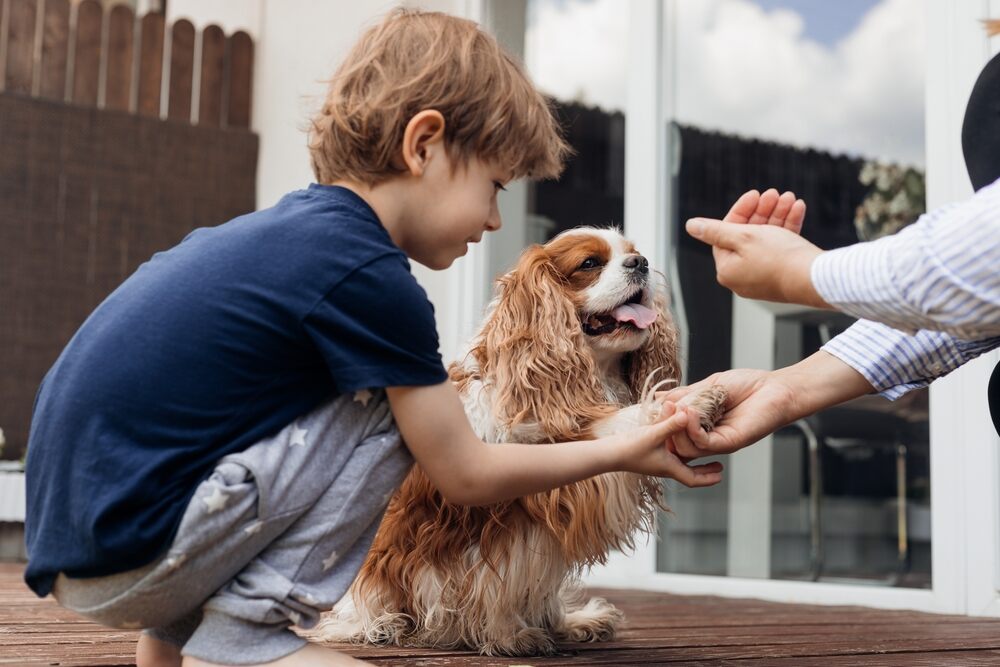Summary
Socializing your dog involves exposing them to various people, environments, and other animals to help them become well-adjusted. The critical socialization period for puppies is between 3 and 12 weeks, but adult dogs can also be socialized with patience. Introduce them to unfamiliar people, clothing, urban settings, parks, different surfaces, vehicles, and other dogs and cats. Reward positive interactions with treats. Be cautious when introducing dogs, ensuring the other dog is friendly and watching for signs of discomfort in your dog. Create positive experiences by gradually exposing them to new sights and sounds in a gentle and rewarding manner. For adult dogs, daily walks, inviting people over, and visiting dog parks can help. Be mindful of your own calm demeanor and seek professional help if needed. Socialization is crucial for a happy, confident, and well-balanced dog.
What is the Ideal Time for Your Dog to Socialize?
There is so much to see for your dog and explore because it’s a vast world. Dogs are just as curious as people and enjoy the company of other dogs, people, and animals. According to a dog’s life cycle, the ideal time for socializing is between 3 and 12 weeks of age. Within this period, experts suggest that you expose them to the following.
- Unfamiliar people
- With unfamiliar clothing such as hoods, jackets, sunglasses, etc.
- Body handling( there may be certain parts of your dog’s body that your dog is uncomfortable with being touched)
- Urban environments
- Parks, waterbodies, woods, and beaches
- Different types of vehicles
- Other types of ground surfaces
- Everyday neighborhood objects such as street signs, bicycles, strollers,
- Other dogs
- Cats
Beyond four months, socializing with your dog will be more challenging. However, be satisfied if you have an adult dog that needs to be associated. Even though it is difficult, it is not impossible to socialize older dogs.
You can socialize even with a dog older than four months with suitable methods and a lot of love and cuddles.
How to Socialize a Dog? – Socializing with Other Dogs
Just like you, your dog needs friends of its kind, too. Depending on whether your dog is shy or outgoing, there are several options for helping your dog socialize.
- Anytime your dog interacts successfully with another dog, reward them with a treat.
- If you’re very confident about your dog’s obedience, let him have a lap around the park without being on a leash.
- Please set up a playdate with a friend’s dog at their place.
- Follow your dog’s cues.
- Make interactions short and pleasant.
- Hit the pet store. You might bump into another friendly pet.
- Know the signs of discomfort in your dog and act accordingly.
Things to Keep in Mind While Socializing Your Dog
Ask your vet to suggest pet socializing activities best suited for you and your dog. Dog training classes are also a good way of meeting other dogs. This is how you can meet other dogs in a controlled environment.
Be Cautious
Always remember to exercise caution while introducing two dogs. Ensure that the other dog is friendly before introducing yours to it. Know how to detect signs of discomfort in your dog. This could be excessive panting, yawning, or tail between the legs. And then act accordingly.
Socialize as Much as Possible
As the pet parent of a pup, your first task is introducing the little one to as many people and dogs as possible. This happens to be a critical point in time, so it is essential to do this so you don’t create any fearful situations for your little bud.
Most puppies can be carried around in an open bag or simply in your arms. Remember to put a cloth or towel on the ground before letting your puppy loose in public places. Keep your puppy on a leash to ensure they don’t cross the boundaries of the towel or blanket.
Create Positive Experiences
To most people, socializing their dogs means introducing them to as many possible other dogs and people. Real socialization means introducing a young puppy to all the sights and sounds they might encounter as a part of their world. It is essential to do this safely and positively.
For city dwellers, this mostly means busy streets, car noises, loud buses, loud people, etc. This could mean farm animal noises and loud machinery for anybody living in a rural environment.
Remember to introduce children of all ages and disabled people who might seem frightening to your pup with their canes or wheelchairs.
Be Gentle
The most critical part of these interactions is to ensure you keep your puppy and dog manageable. Try to keep the interaction short and sweet.
Keep talking to your dog through it and reward it with treats. If your dog seems afraid or intimidated, move away from what you’re socializing with.
If your dog still needs to be vaccinated, beware of group situations.
Proper Socialization
For the first three months of their lives, puppies will absorb and soak up any information about the world presented to them.
Proper socialization at this stage means influencing your puppy’s life and temperament. Introduce your pup to plenty of new experiences and make every one of those experiences positive.
Tips to Socialize an Adult Dog
Unfortunately, not all puppies can socialize with people, dogs, and other animals. Sometimes, training your adult dog to adjust to various social situations becomes essential. Some tips for socializing an adult dog:
Daily Walks
A walk can mean so much more to your dog than you believe. It will allow your dear dog to explore the outside world. It will enable you to spend quality time with your four-legged friend.
Also, it will be a chance to expose your dog to new sights and sounds—smells, etc. While outside, there is more potential for your dog to learn good social behavior as the situations are wide and varied.
Invite People Over
Invite a couple of friends and host them in a place familiar to your dogs, like your living room or backyard. Don’t let your friends overwhelm your dog. This is because you want to let your dog take the initiative and approach them, not vice versa.
Make it a thoroughly pleasant experience for your dog and reward them with treats whenever your dog does something right. Ensure your dog associates new people with fun and friendly interactions at the end of the day.
Visit a Dog Park
A dog park is a fantastic place to meet other dogs and people. However, your dog may be nervous or frightened of the unfamiliar surroundings. The best way to proceed would be to take your dog up to the park and let your dog watch other dogs from a distance.
Gradually enter the park and let your dog interact with the other dogs. Reward them with a treat every time they respond in a friendly way to the other dogs and people. If your dog reacts aggressively or nervously, immediately move away from the other dog or person and start again.
Be Mindful
Dogs are susceptible to mood changes. They can sense when you are tense or worried about any interaction. Also, this will negatively affect them and make them nervous or tense. Make sure your body language and voice tone are both calm and confident. Be quiet and collected, and don’t make a big deal from the interactions.
Get Professional Help
If your methods are not working with your dog, consider contacting a professional dog trainer or taking them to a daycare setting, especially for dogs. Be patient with your dog.
Expect your dog to catch on slowly. Adult dogs take a little more time to get used to unfamiliar surroundings. Make sure you give your dog calm, positive, and reassuring vibes. Reward generously with treats, and soon you will have a well-socialized dog.
How to Socialize Your Dog During and After the Pandemic?
Your pet must have been happiest when the pandemic started because it meant you were with it 24/7. When you’re trying to return to your normal lifestyle, the biggest concern will be the separation anxiety your pet will experience once you go back to work and look for a pet sitter.
The best thing to do at this time is to get back to your dog’s old schedule.
- Give your pet its food around the time you would be feeding them during a typical workday.
- Entertain your dog well before leaving the house with activities that stimulate and tire out your dog. This way, your dog will not get bored when you are not around.
- Even while you can still give your dog your time, try to work a practical and feasible schedule. Your dog might enjoy three-hour walks, but you must consider whether this is possible once you return to your routine.
Dogs are said to be man’s best friends. They indeed are because the world begins and ends with its master for any dog. However, if you want a happy dog, you would need more if you are the only person your dog is acquainted with.
Dogs need to socialize, too, just the way human beings do. Be calm and patient with your dog, which is an excellent way of encouraging your dog to be happy, confident, and well-balanced.


